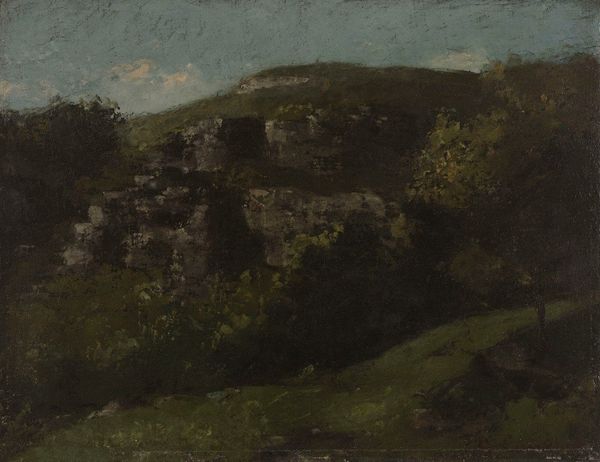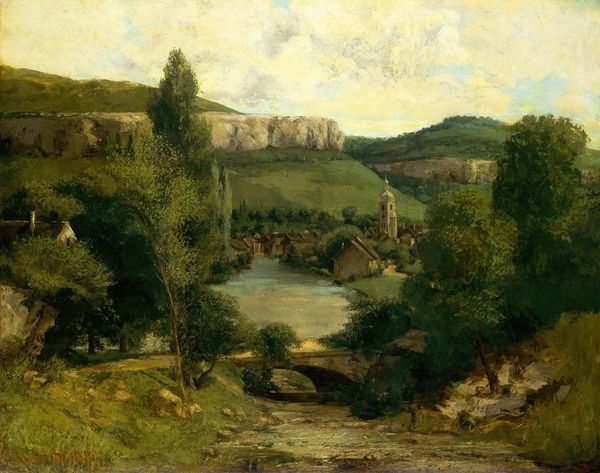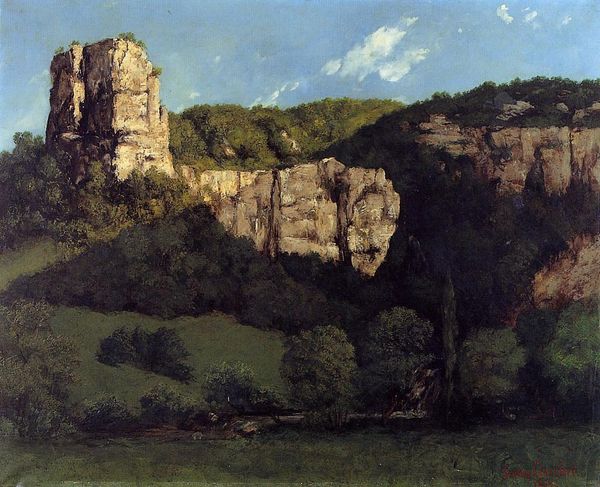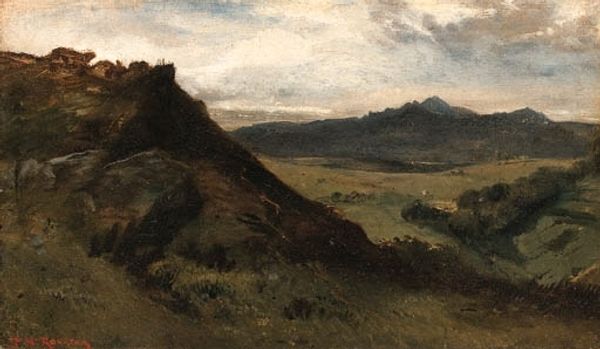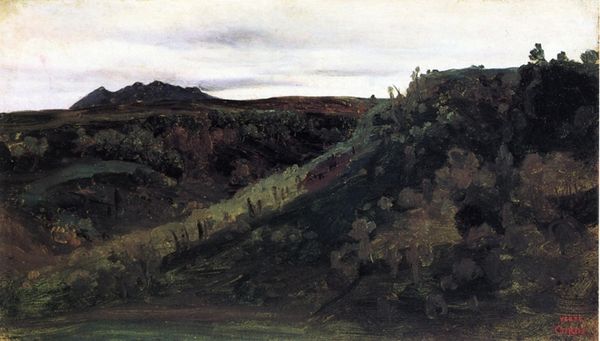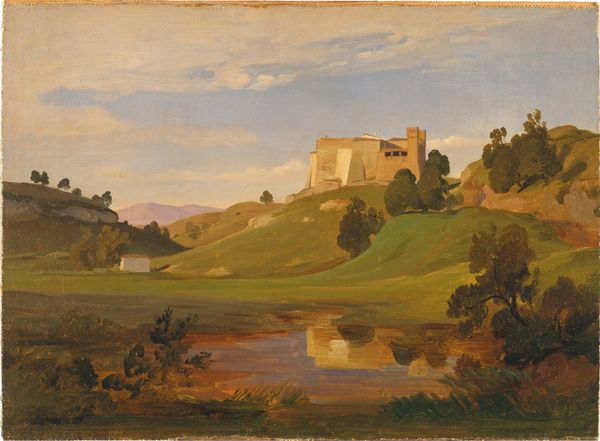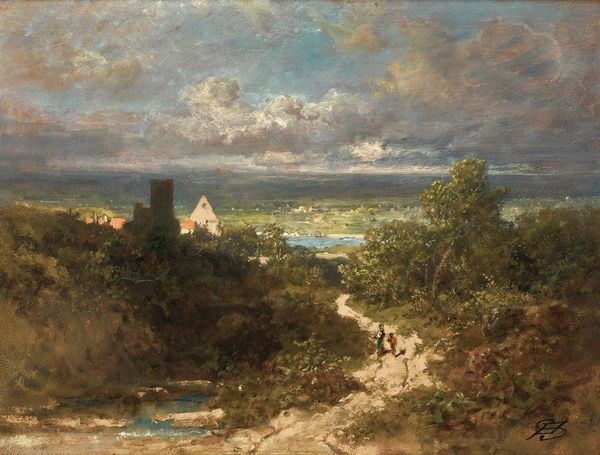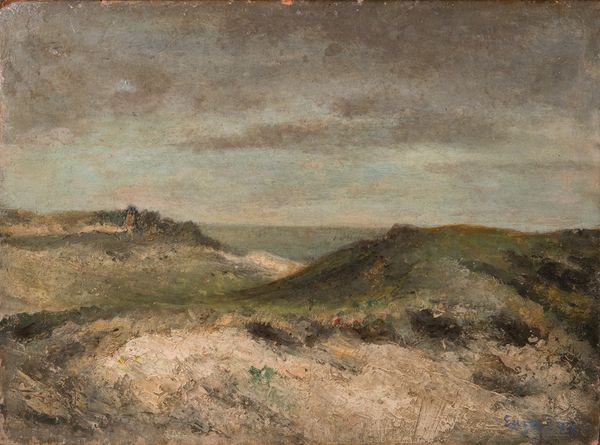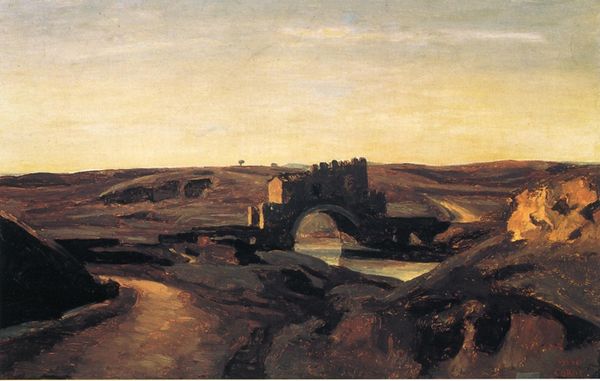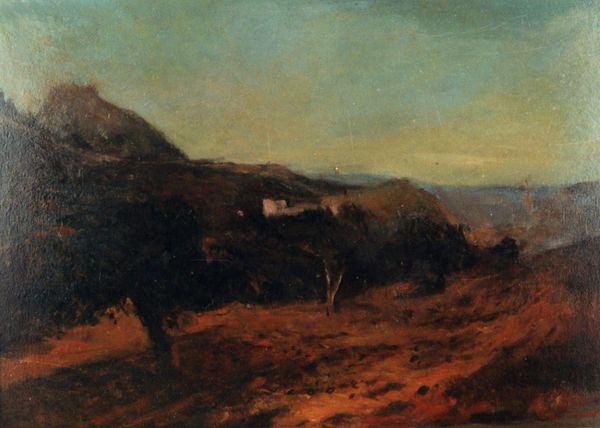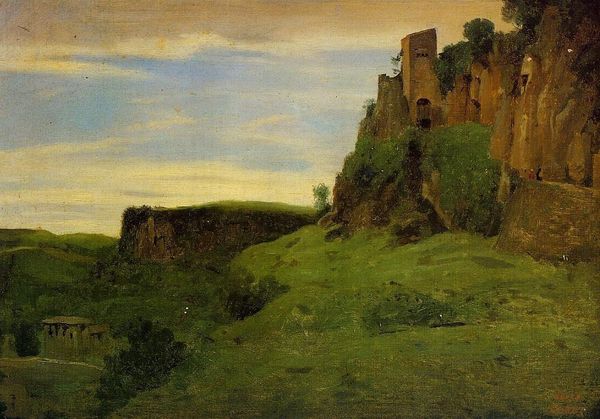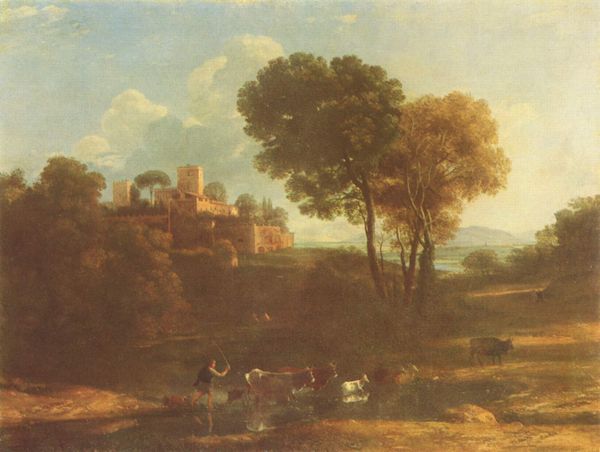
#
abstract painting
#
charcoal drawing
#
impressionist landscape
#
possibly oil pastel
#
oil painting
#
fluid art
#
acrylic on canvas
#
underpainting
#
mountain
#
painting painterly
#
watercolor
Dimensions: 24.1 x 35.6 cm
Copyright: Public domain
Théodore Rousseau painted this oil on canvas of a "Town in Auvergne" sometime in the mid-19th century. This work exemplifies the Barbizon school's focus on the French landscape, but its vision is complicated. On one hand, we see a romantic appreciation for nature. The town is nestled into the landscape, as though the built environment had sprouted organically. But, on the other hand, what structures are depicted, and where? The buildings on the hilltop are fortifications, and we view them from a low vantage point, at a distance. In mid-19th century France, the feudal past was viewed through rose-tinted glasses, but it was a past nonetheless, one that excluded modern viewers. Looking at Rousseau's painting today, we can ask ourselves what social and political work is accomplished by this kind of landscape imagery. Art historians look to exhibition reviews, artists' correspondence, and other textual sources to help answer such questions. The meaning of art is always contingent on the social and institutional context.
Comments
No comments
Be the first to comment and join the conversation on the ultimate creative platform.

